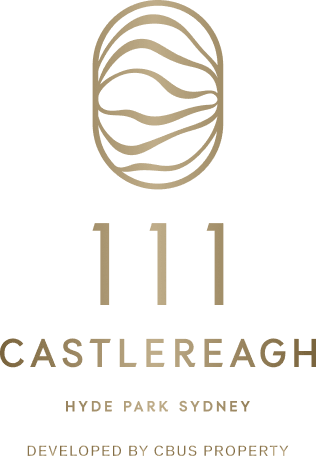History of David Jones Men’s Store which opened in Sydney in 1938
Extravagant displays were just part of the experience when it came to enticing shoppers to this landmark David Jones store — including setting up a plane in the boyswear department. Author: Mercedes Maguire | Original Source: The Daily Telegraph
The $1 billion development at 111 Castlereagh St is tipped to herald a new age of living, working and retail in the heart of Sydney’s CBD.
The same was said when the elegant David Jones Men’s Store opened on the same sitein 1938. Back in those inter-war days, going shopping was an occasion — women donning their best dresses with matching gloves, shoes and handbags and men in tailored suits and hats for a day at the shops. And the stores — David Jones, Horderns, Mark Foys and Grace Brothers — worked hard to attract the retail dollar. Their department stores were a destination. The David Jones Men’s Store has been closed for years but the new Cbus Property and Scentre Group development will again make the impressive art deco structure a landmark of the CBD. The sandstone facade has been retained and will comprise a mix of premium office space and luxury retailing, while a new 22-storey apartment tower will rise up above it offering 101 new homes.
Anna McLaurin, a heritage consultant from Weir Phillips Heritage and Planning, has been working on the site, which initially housed a six-storey building, and was the men’s answer to the flagship David Jones women’s store on Elizabeth St. Shoppers were greeted by cabinetry on the ground floor filled with stylish hats, gloves and accessories in an openplan layout designed to encourage impulse buying. On the first floor you would find men’s outerwear — suits, tailoring and a men’s barber shop.
On the third floor was the boy’s department. The remaining three levels initially housed office space, including an advertising department and staff training, but by the 1950s these floors were remodelled into a homemaker’s prestige and furniture floors. “People made a day of going to a department store like David Jones,” McLaurin says of the inter-war and post-war years.
“You would stock up on everything you needed in the one day — your undergarments, maybe have a suit tailored, get a hat and then stop for lunch at the cafeteria. These department stores knew the value in keeping shoppers in their building for as long as possible, which is why you often found places to lunch there. “And they would put on extravagant displays to attract people into the stores. The David Jones Men’s Store once had a Swedish Safir aeroplane craned in and set up in the boyswear department on level three.”
The store’s influence didn’t end on Market St. David Jones released its first shopping catalogue in 1890, establishing a mail order department for people who lived outside of Sydney. The Inwards Parcels Shed at Central Station — which is today the Railway Square YHA — would receive parcels from retailers around Sydney via a tunnel to be dispatched around Australia. Only three years after it opened with a rousing speech by then-prime minister Billy Hughes who declared it “a magnificent temple of commerce”, the store was turned over to the war effort and the Ministry of Munitions.
The top floor was even converted to a club for American soldiers. “When it reopened as a store, there were massive queues and crowds of people who came to buy things that had been denied to them thanks to rationing during the war,” McLaurin says of the 1946 reopening. “People clamoured to buy previously-scare items like cigarettes, leather goods and even socks.” McLaurin says much of the historic value of the new building has been retained; the exterior sandstone cleaned, grand internal staircases restored and even the wartime additions redone in keeping with materials available at the time. “War rations at the time the additional storeys were added in 1941 meant there was a lack of aluminium which was being used for building planes,” McLaurin says. “Instead, they used timber for the windows and painted it silver. You can see it if you know what you’re looking for and I think it’s great that even these simple elements have been retained. “It’s all part of the history of the building.’


